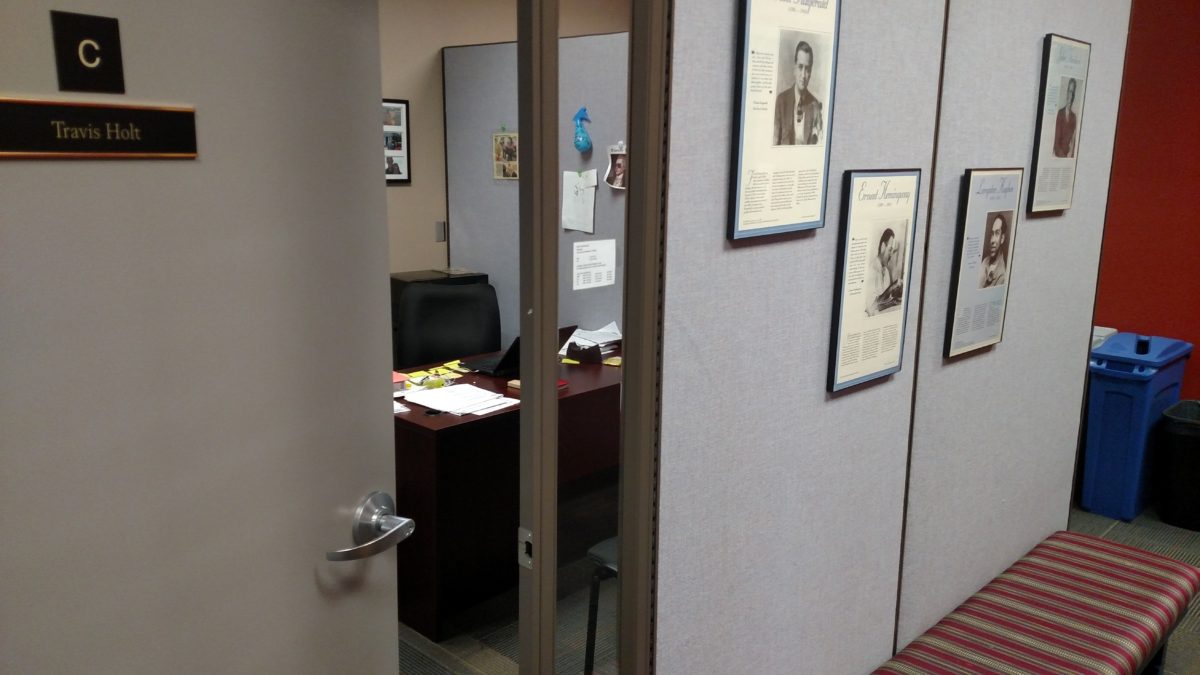
As mentioned in previous posts, my studies have focused on Basic Writing and transfer theory. My affinity for transfer theory emanates from my desire to not just further research for the field, but to examine the ways some of our current pedagogies might have marginalized this group of students, unintentionally of course, and how we might improve our practices to avoid this and empower basic writers using familiar literacies and knowledge from other parts of their lives. However, as I am writing this post, I am reminded of how complex such a study using transfer theory might be considering what might be of particular interest as an object of study, or better yet, objects of study (OoSes).
With transfer theory, at least two or more objects of study need attention in order to assess whether transfer is actually occurring. One object needs to exist in the academic context since this is where I would want to see if literacies or knowledge transfers, and then the social context, most likely a social media platform, would be the other. Some OoSes in the academic context commonly include student papers, emails, prewriting, or drafts while the objects of study in the social context would be “short-form digital writing” (Pigg, Grabill, Brunk-Chavez, Moore, Rosinski & Curran, 2014, p. 108) dealing with posts and messaging, construction of online profiles, or emoticons. Student papers are common OoSes in Composition and Rhetoric research studies because they are primarily what students produce in the classroom and should reveal not only the way they think and communicate that understanding, but also how they do or do not showcase the skills they are learning and developing in class, and social media posts are a current “hot” topic because of their frequency and the way students navigate rhetorical situations in a public and social sphere. Yet, this is still just a broad view of typical OoSes in the field, and the reason social media has become fairly common in current studies is because of its prevalence and consistent usage by basic writers and FYC students. It is the form they communicate most in, which provides a possible wealth of information for researchers to sift through.
When examining these text-based OoSes, I might use a linguistic approach to observe how students construct identity socially through the reuse of particular words such as first person pronouns or culturally homogenous diction and then analyze their academic works to see if they construct identity similarly. Is there a disconnect? If so, what explains the disconnect in how they create identity? Is it pedagogy or curriculum that causes this? Another textual analysis approach could be student use of emoticons in conveying tone and voice in social media posts compared to how students can, or cannot, convey the same emotion in strictly text-based, academic writing. In both scenarios, text-based OoSes serve as the foci for the studies.
Transfer theory and these OoSes have roots in previous calls for improving student literacies and basic writing curriculum. Bartholomae (1986) noted the struggle for basic writers does not necessarily lie in their skills as writers, but it is the unfamiliarity of the context of academics itself and the assignments we ask students to complete within that environment. Specifically, a curriculum that focuses on Standard Written English as the accepted communication marginalizes basic writers who lack comfort with it, but this does not mean they are incapable of coherent, organized, and effective communication altogether. And this is why Bizzell (2000) felt that Social Media, a familiar area of communication for them, should be included in the classroom as traditional curriculum “too often ignores or suppresses the real linguistic resources that all students bring to school” (p. 6). Other scholars documented the resources available in social media such as how instructors can help students examine user profiles and audience identification on Facebook by making them aware of the “filter bubble.” Facebook algorithms restrict posts that appear on feeds to those that are more frequently liked and shared by a user, creating a particular, interested audience or community for that user, which can theoretically transfer to the academic setting in helping students become more aware of discourse communities and audiences (Head, 2016). Yet, others suggested that social media can complicate, not solve, some of the issues of transfer.
Pozorski (2013) argued that using technology in the composition classroom actually “disempowers” the students (p. 190). The difficulty is not in the technology alone, but in the contrast of cultures, “academic and youth/social,” (p.197) that the technology exists in. Vie’s (2015) research echoed this sentiment—though she acknowledged the growing interest in social media as viable and warranted—as her survey of faculty revealed concerns about crossing the professional and personal boundary when including social media in the academic curriculum. Looking at transfer of skills between the two contexts is important, but what cannot be overlooked is the risk of students not understanding that though skills transfer, boundaries with expected behaviors are still present between those contexts.

While social media continues to be an increasingly common topic and an OoS in research, it fits in the context of the history of basic writing. Since Shaugnessy’s coining of “basic writer” and the open admissions at colleges and universities during the 1970s has fostered a focus on marginalized students and their ability to “navigate” (Bartholomae, 1986) the academic setting. Examining how to tap into their preexisting skills to foster growth in academia directly ties into the current situation where social media is the most common form of communication in the social setting and the subsequent popularity of transfer theory.
Such research studies will not be simple or easy as evidenced by the concerns of scholars regarding social media in the academic context and the complexities of social media itself (its multimodal composition, multiple OoSes within it, changing platforms, and popularity shelf-life among students). Questions that arise might be what specific part of social media should become the OoS of my study? How can this research remain relevant if the social media platform will most likely disappear or change drastically in a short of time span, possibly before the research is complete? However, the importance of establishing the connection between academic and social contexts and the possibility of empowering basic writers through this is too valuable to overlook.
References
Bartholomae, D. (1986). Inventing The University. Journal of Basic Writing, 5(1), 4-23. Retrieved from http://www.jstor.org/stable/43443456
Bizzell, P. (2000). Basic Writing and the Issue of Correctness, or, What to Do with “Mixed” Forms of Academic Discourse. Journal of Basic Writing, 19(1), 4-12. Retrieved from http://www.jstor.org/stable/43739259
Head, S. L. (2016). Teaching grounded audiences: Burke’s identification in facebook and composition. Computers and Composition: An International Journal for Teachers of Writing, 39, 27-40. doi:10.1016/j.compcom.2015.11.006
Pigg, S., Grabill, J. T., Brunk-Chavez, B., Moore, J. L., Rosinski, P., & Curran, P. G. (2014). Ubiquitous writing, technologies, and the social practice of literacies of coordination. Written Communication, 31(1), 91-117. doi: 10.1177/0741088313514023
Pozorski, A. (2013). Podcast paralysis: Inventing the university in the twenty-first century. Writing & Pedagogy, 5(2), 189. doi: 10.1558/wap.v5i2.189
Vie, S. (2015). What’s Going on?: Challenges and Opportunities for Social Media Use in the Writing Classroom. The Journal of Faculty Development, 29(2), 33-44. Retrieved from http://ezproxy.liberty.edu/login?url=http://search.proquest.com.ezproxy.liberty.edu/docview/1776597451?accountid=12085


